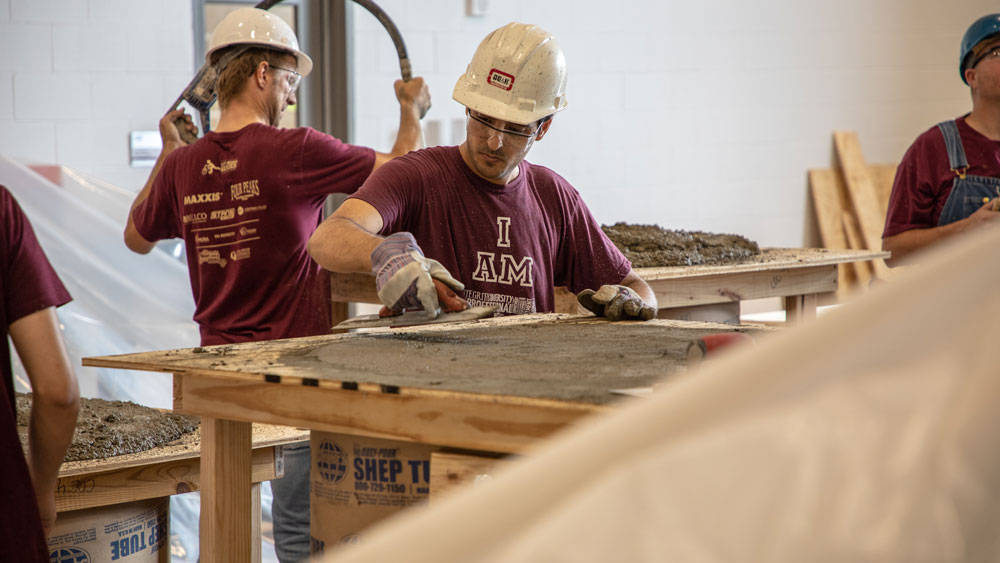
Bridges make it possible to get to places faster and more conveniently, but in the face of an earthquake these structures are subject to forces that can cause extensive damage. Dr. Petros Sideris, an assistant professor in the Zachry Department of Civil and Environmental Engineering at Texas A&M University, is leading a collaborative research effort funded by the National Science Foundation (NSF) to investigate the performance of hybrid sliding-rocking (HSR) columns, which provide the same support as conventional bridge infrastructure columns but are more earthquake resistant.
Conventional bridges are cast-in-place monolithic concrete elements that are strong but inflexible. Structural damage in conventional columns, usually caused by a natural disaster, result in cracking damage that would force a bridge to close until repairs are completed. On the other hand, bridges with HSR columns are able to withstand large earthquakes with minimal damage and require only minor repairs, likely without bridge closures. Such infrastructure not only increases community quality of life, but can also save thousands in taxpayer dollars.
“There are multiple advantages to the public,” Sideris said. “By preventing bridge damage we can maintain access to the affected areas immediately after the event for response teams to be easily deployed. This accessibility will further help the affected communities to recover faster. Also, by mitigating losses related to post-event bridge repairs and bridge closures, more funds can be potentially directed to supporting the recovery of the affected communities.”
Bridges with HSR columns are more resilient than traditional columns because they have more deformability, meaning they can more easily alter their shape. Traditional columns are cast as one piece, which means that as the earth shakes and bends, these structures crack like a stick bent at both ends. HSR columns are built as a series of individual concrete segments held together by steel cables that allow for controlled sliding and rocking. This allows the columns to shift and rock without damage, while post-tensioning strands ensure that at the end of an earthquake the columns are pushed back to their original position.
“Our research has shown that hybrid sliding-rocking columns can be very damage resistant,” Sideris said.
In the future, Sideris plans to investigate other aspects of the new design, such as how resistant HSR columns are to vehicular impact. Utilizing feedback from an expert panel of engineers from academia and industry, the team is also investigating potential repair strategies for the HSR column design in comparison to strategies used for conventional bridge columns.
“Selecting the best repair strategy after an earthquake is no easy task because, on the one hand, it affects the direct repair costs and bridge downtime, while, on the other hand, affects the future performance of the bridge in future earthquakes,” Sideris said. “For a new design, such as the hybrid sliding-rocking columns, this can be even more challenging.”
“Working on projects such as this that help people, and help making their lives better during difficult times, has always been meaningful and fulfilling for me,” Sideris added.
This NSF-funded project includes collaborations with Dr. Abbie B. Liel from the University of Colorado at Boulder, a co-principal investigator on the project, doctoral students Mohammad Salehi (Texas A&M) and Jakub Valigura (University of Colorado at Boulder), several Texas A&M undergraduate students and former Texas A&M master’s student Hareesh Goli.